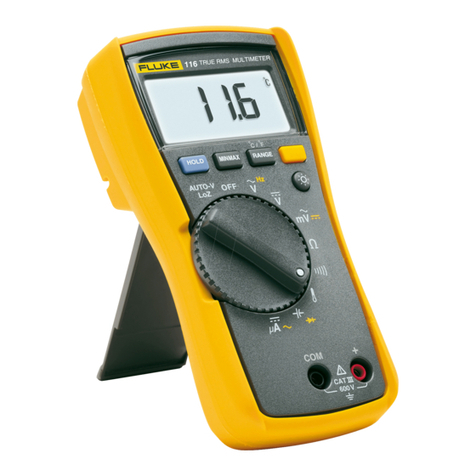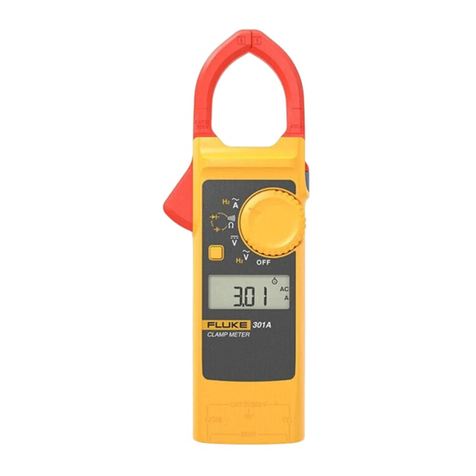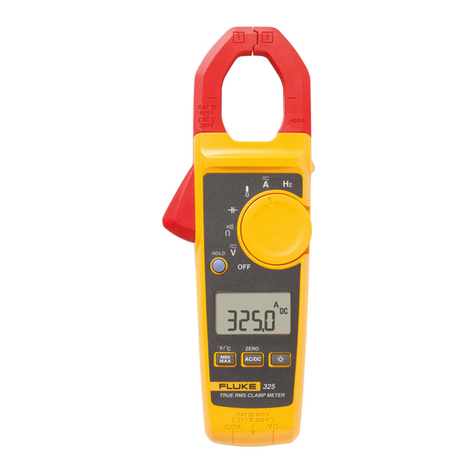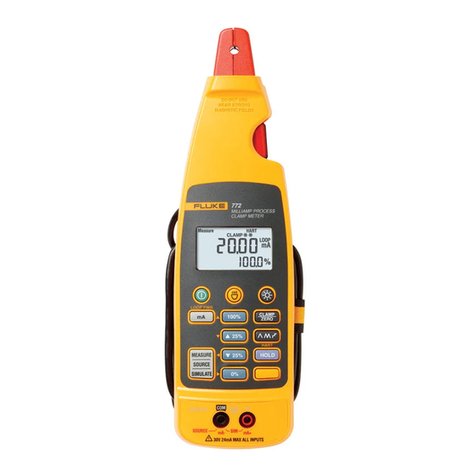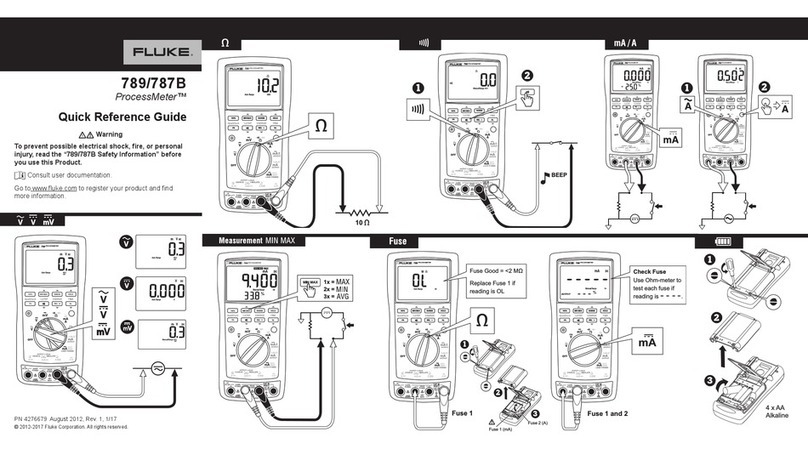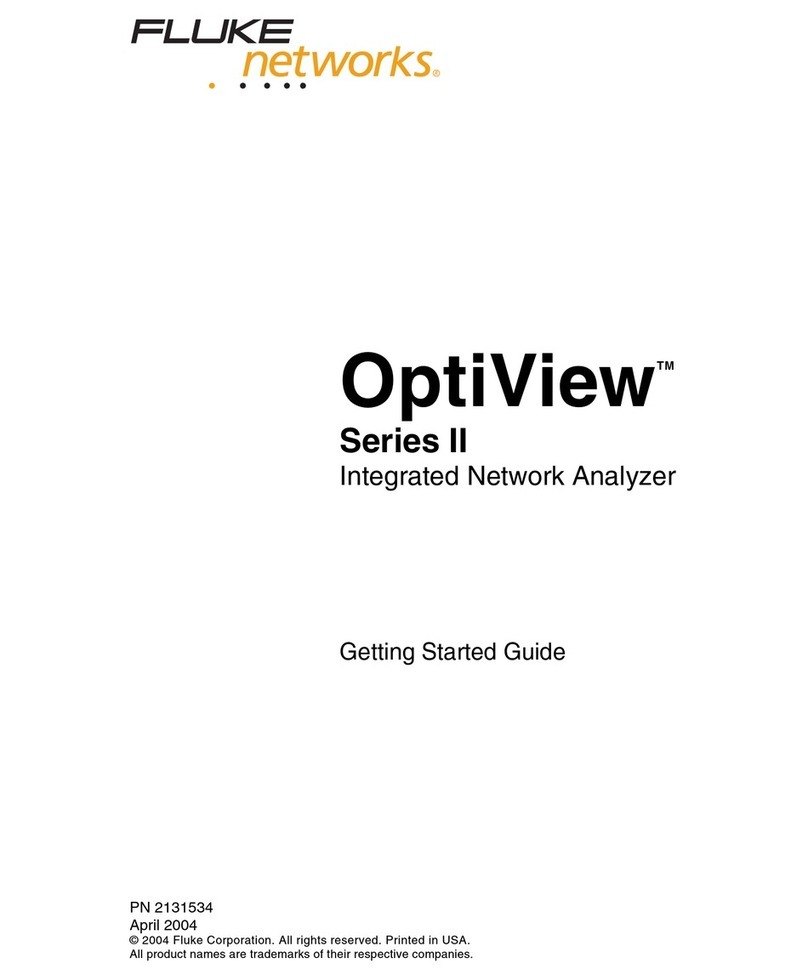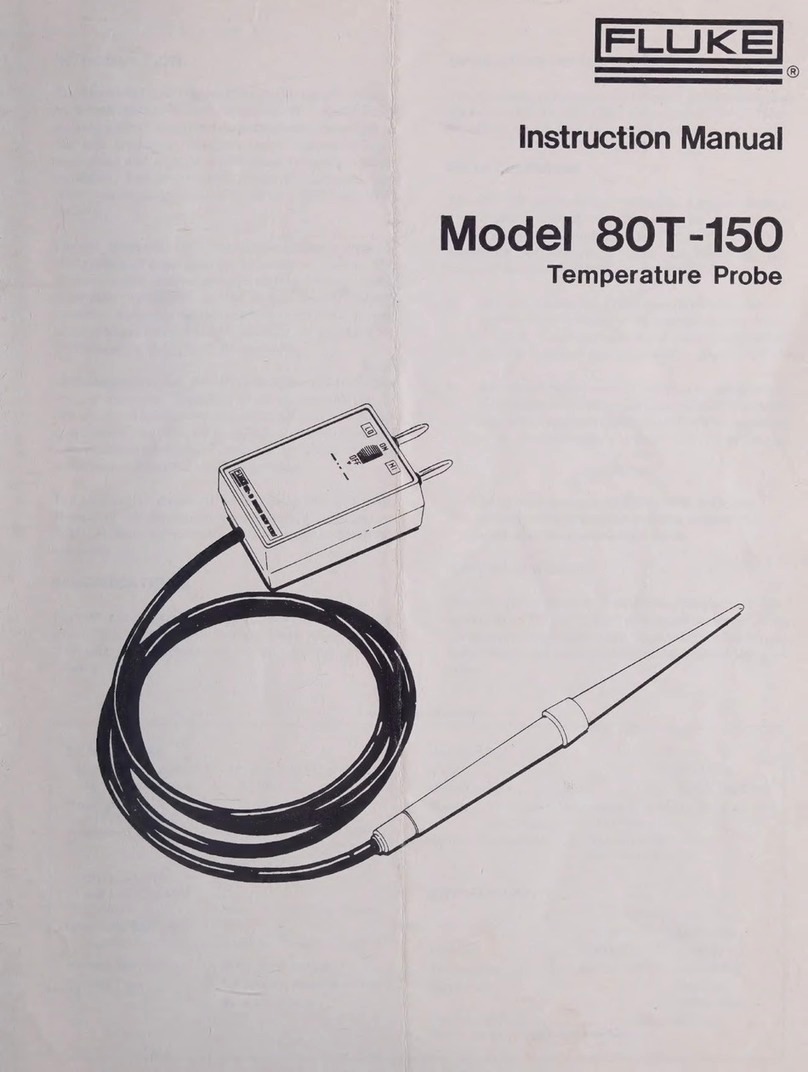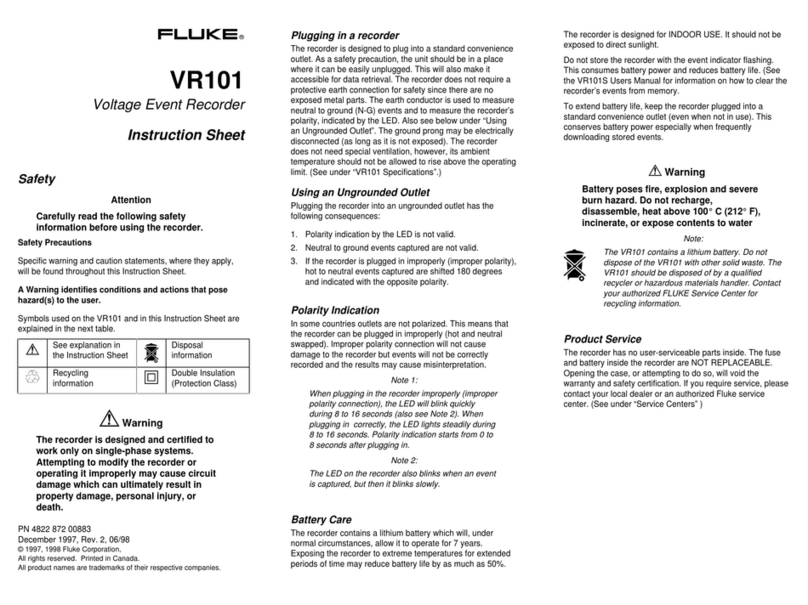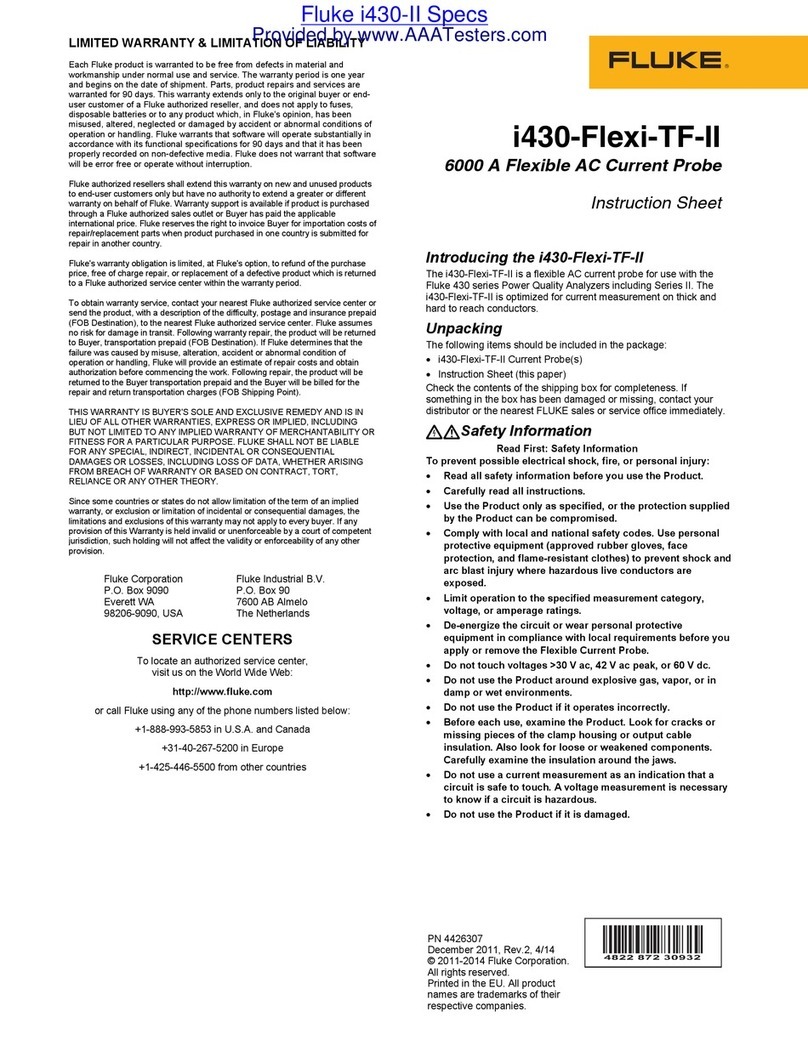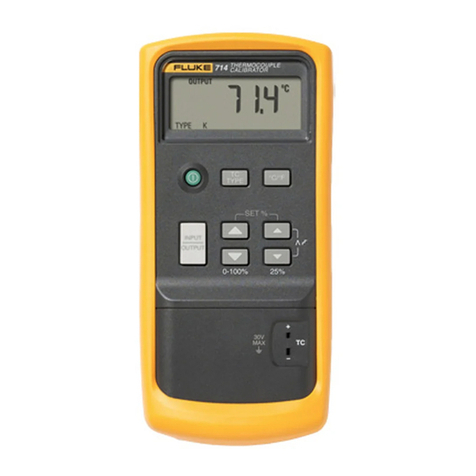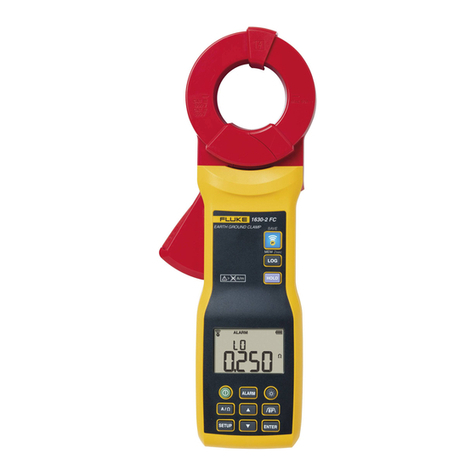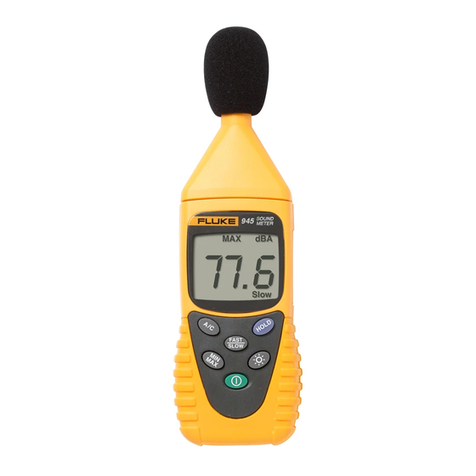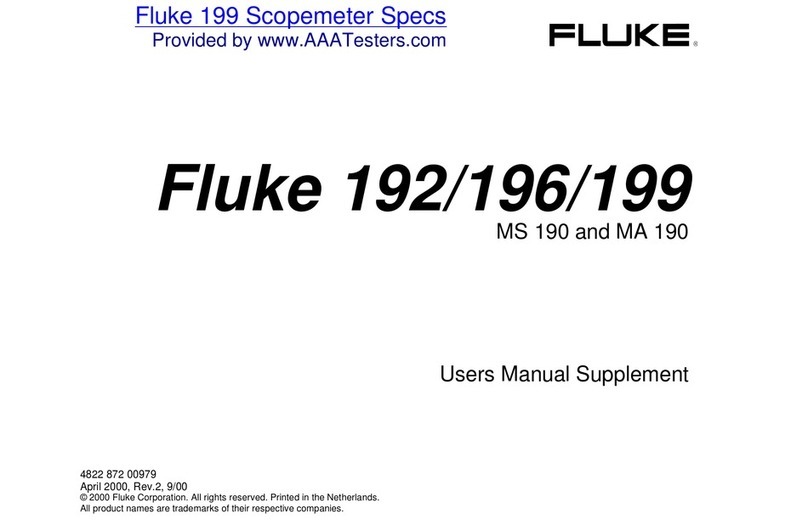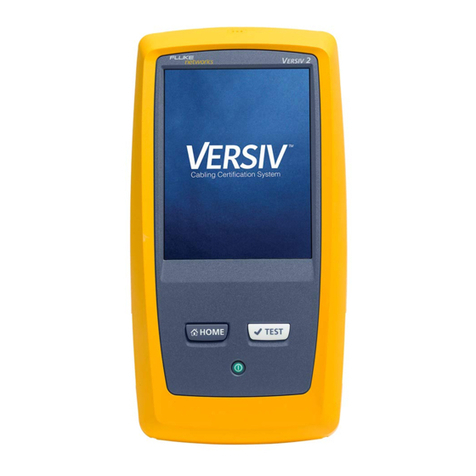
When
making ameasurement, the current-carrying
conduc-
tor is not broken, and remains electrically isolated
from
the
current
meter
input
terminals. As
aresult,
the current
meter's
INPUT
LO
or
COM
terminal
may
be either floated (iso-
lated)
or
grounded.
METER READINGS
When
the 80i-600is
connected
to acompatiblecurrentmeter
and
clamped
aroundasinglecurrent-carryingconductor, the
meter
reading will
be
one 1
DOOth
of
the actual current in the
conductor. For example, a5-ampere (A) input current will
be
transformedintoa 5 milliampere (rnA) outputcurrent(see
Figure
1).
When
measuring current
in
,U1
ac line cord, the
jaws
should
be
clamped
aroundonly one conductor(the black
or
hot
wire
in athree wire cord).
If
the
jaws
are
clamped
around both
current carrying conductors.
tJle
currents will cancel and
produce azero reading.
If the probe
is
clamped
around two wirescarryingcurrent
in
thesamedirection. the
sum
will be read. Reversingone
of
the
wires causes the difference to be read.
LOW-LEVEL CURRENT MEASUREMENTS
The
80i-600
AC
Current Probe is specified to measure
currents
of
1A or greater. Currentsless than 1A will produce
meter readings that are below the true value. Low-level
currents can be measured by looping the input wire through
the
jaws
so that the
sum
of
the current through the
jaws
is
greaterthan I
A.
The
actualcurrentcan then
be
calculated by
dividing the meter reading hy the
number
of
turns looped
through
the
jaws.
For
example. to measure acurrent
of
400
rnA (OAA). form
aIO-tum loop ,md
c1,Ullp
the
jaws
of
the 80i-600 around all
10 turns.
The
meterreadingwill be4
mAo
whichcorresponds
to aprimarycurrent
of
4A. The actual current
in
the
conduc-
tor
is
4A
divided by IO-turns,
or
400
rnA.
NOTE
The range selection on the
meter
should
always
be 20 mA or greater (12 ohm shunt
or
lower).
Lower ranges with higher shunt values will
cause reading errors.
OPERATION
I. Connect the 80i-600 output
connectors
between the
common
and the appropriate
current
input
jack
of
a
suitable meter, then switch the
meter
on.
NOTE
Refer to
Tab/£'
Ito determine the approprinte
input
jack
and
proper
jll1lction setting
for
use
with aFluke handheld DMM.
2. Select a20 rnA ac
or
greater current range.
3.
Clamp
the probe around the current-carrying conduc-
tor to be measured (see Figure I).
Make
sure the probe
jaws
are tightly
closed
around the conductor.
NOTE
Wire
siz.e
ilnd the position
of
the wire
Ij··ithin
the
probe
jaws
does not affect measurement accu-
racy.
4. Multimeter readings displayed in milliamps (mA)
can
be read directly as amperes
of
input current. Readings
displayed in amperes (A) must be multiplied times
1000 to obtain the amperes
of
input current.
SINGLE
CURRENT-CARRYING
CONDUCTOR
...---320A
320 rnA
--
II
3.?lllfll
AC
CURRENT FUNCTION
--+----+
o
Figure
1.
Typical
80i-GOO
Using aTypical Meter

